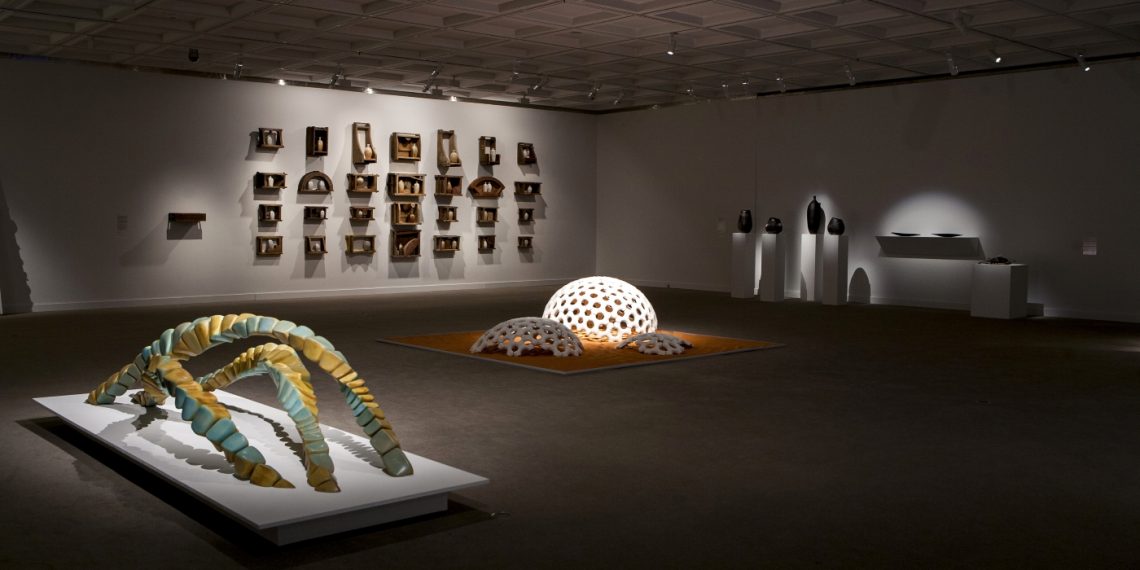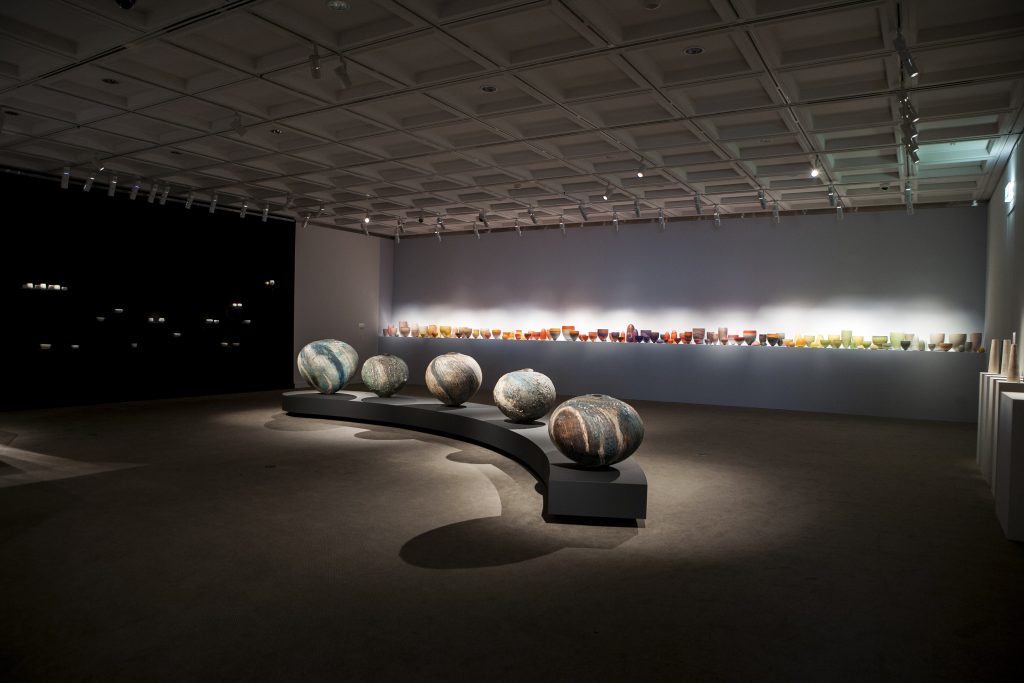By Laetitia Wilson
Once in a while a ceramics exhibition reaches breathtaking proportions by defying expectations and ambitiously expanding the medium. Here and Now 14 at the Lawrence Wilson Art Gallery was such an exhibition. It showcased new works from 12 Western Australian artists and situated ceramics as a strong medium looking outward as ever greater than the insular cottage industry of bygone years.
The sheer diversity of ceramics practice today was made manifest as the exhibition provided a snapshot of current practice alongside a suggestion of potential future material and conceptual directions. The ancient art of clay forming occupied the gallery space with presence and reached epic sculptural proportions. This was emphasised by the contrasts between powerful and delicate, use of light and dark materials, large-scale and small-scale pieces, audacious and modest aesthetics and both objects and moving image.
A dusk to dawn toned series of porcelain vessels and inverted forms by Pippin Drysdale immediately captured the eye with its simultaneously bold and soothing spectrum. Closer inspection revealed sophisticated attention to detail in the delicate incision of the surfaces. This horizon was undoubtedly influenced by the richness of the Western Australian landscape, from the expansive view when looked upon from a distance, right down to its earthly striations formed by persistent winds.
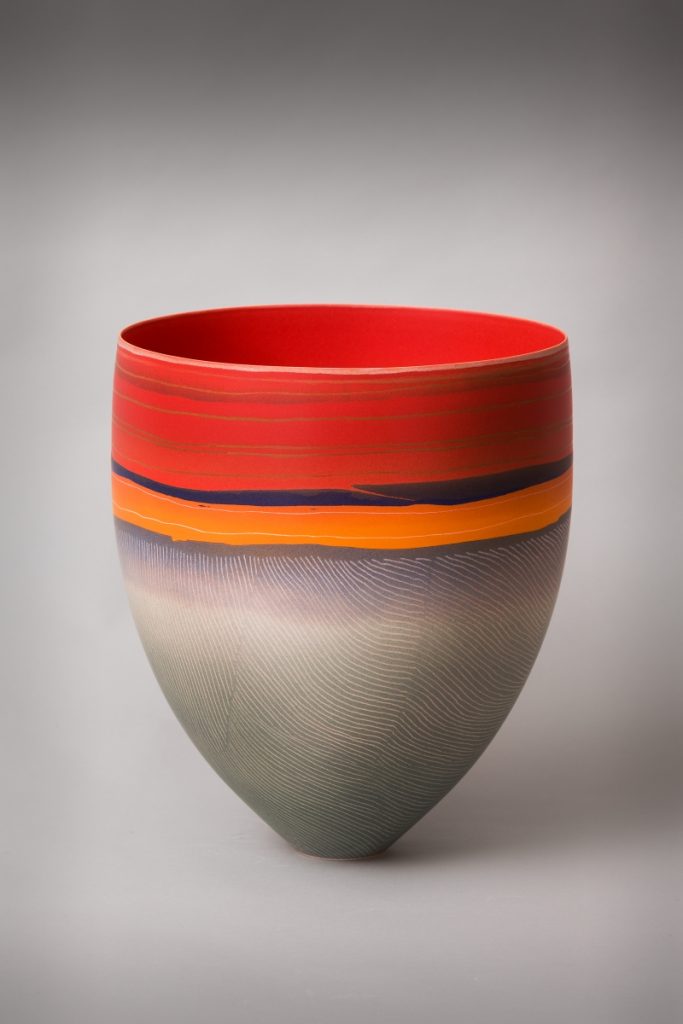
Pippin Drysdale, Radiant Promise, 2014, Porcelain, 13.6 x 11.4 inches / 34.5 x 29 cm. Photo by Sue Warrington. 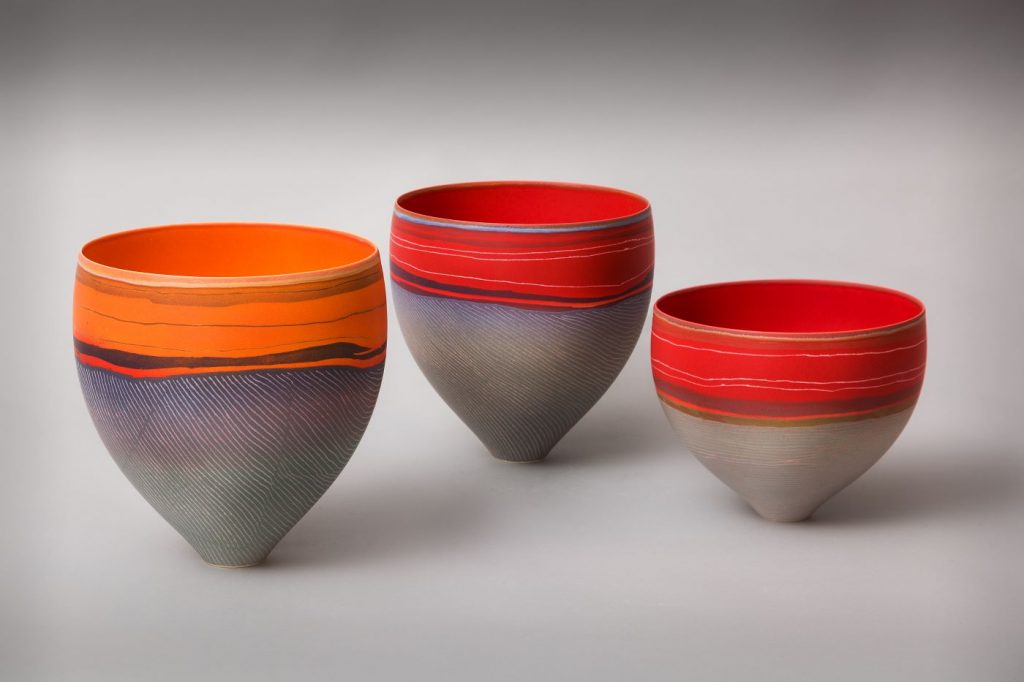
Pippin Drysdale, Ribbon Lightning at dusk – Porcelain Vessels Group of Three Tanami Mapping III, 2014. Photo by Sue Warrington. 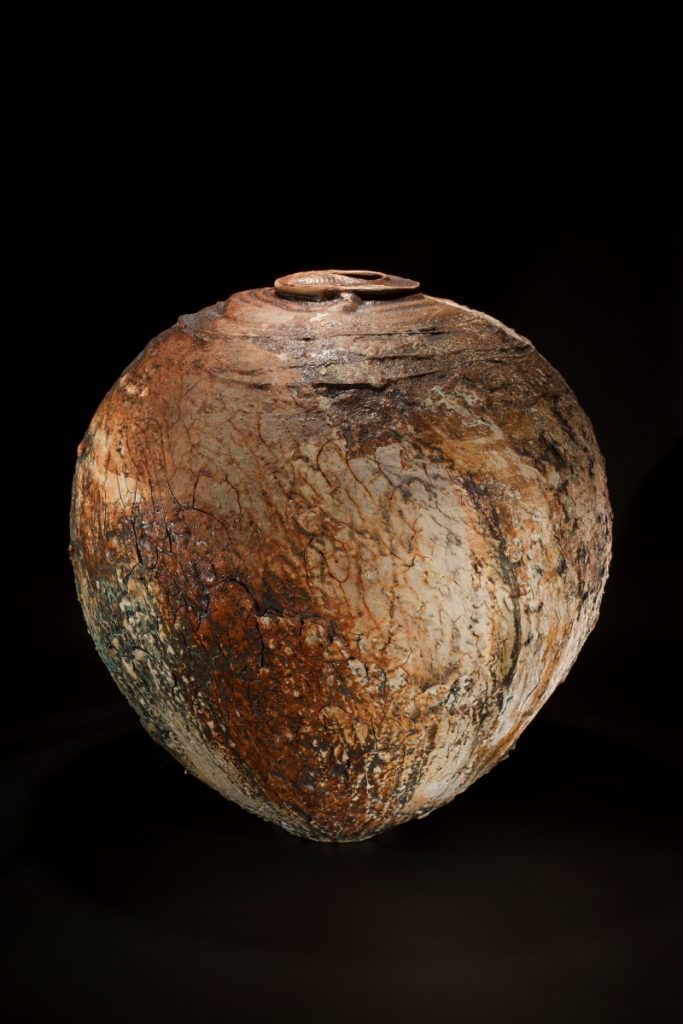
Warrick Palmateer, Form 1, 2014, Clay, H 59 inches / 150 cm. Photo by Kevin Gordon.
Drysdale’s installation formed the backdrop for a more rough and rugged interpretation of the landscape theme, with the mighty pots of Warrick Palmateer. Placed upon a curving plinth these pots commanded attention through not only mass but also the rich layers of their encrusted textural skin. With a combination of materials including porcelain, stoneware, iron sulphate, silicon carbide and copper carbonate, they were like apprehending a dense and craggy landscape from a bird’s eye perspective.
In contrast to such heavy works were the delicately refined porcelain pieces of Stephanie Hammill, who again responded to the Western Australian landscape. Materials drawn from the land, including ilmenite sand and garnet were combined with fine porcelain to result in a gradated surface, recalling the experience of looking across an open plain as the first light breaks, where the sky is all cool hues and the land is streaked with rising mist.
Black-fired within the land then, were the vessels, coolamon and message sticks of Bevan Thompson. Here a spiritual and ancestral connection to the land was expressed, as the cosmology of the artist’s family stories was carved onto the surface of the earthenware and stoneware. The objects were darkly stained by the firing technique and crafted to be deeply resonant with meaning.
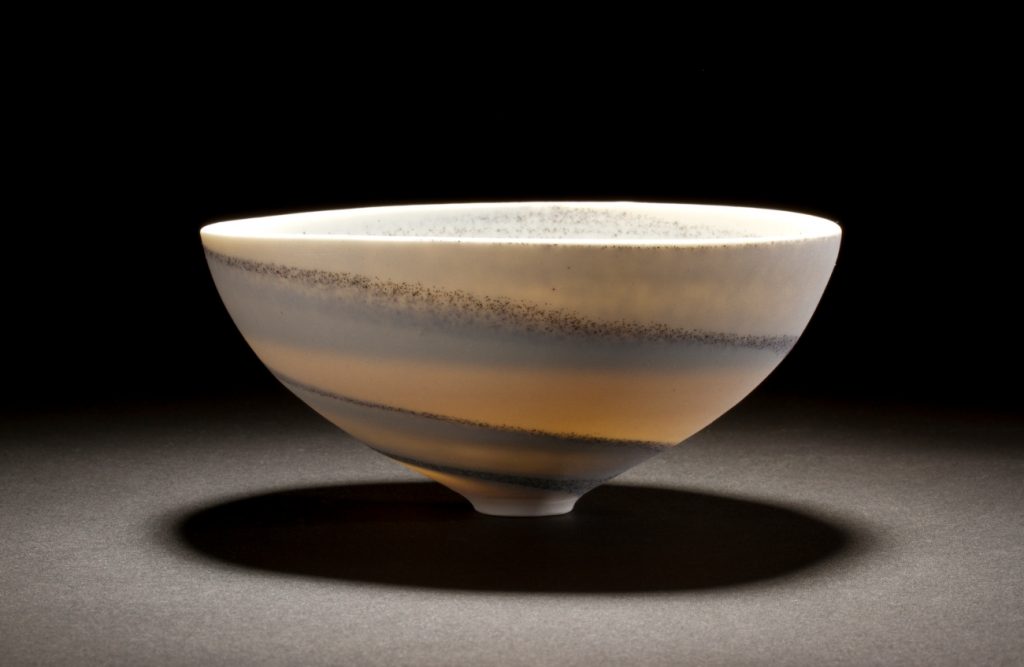
Stephanie Hammill, Bowl 6, 2014, Porcelain, 2.4 x 6.3 inches / 6 x 14 cm. 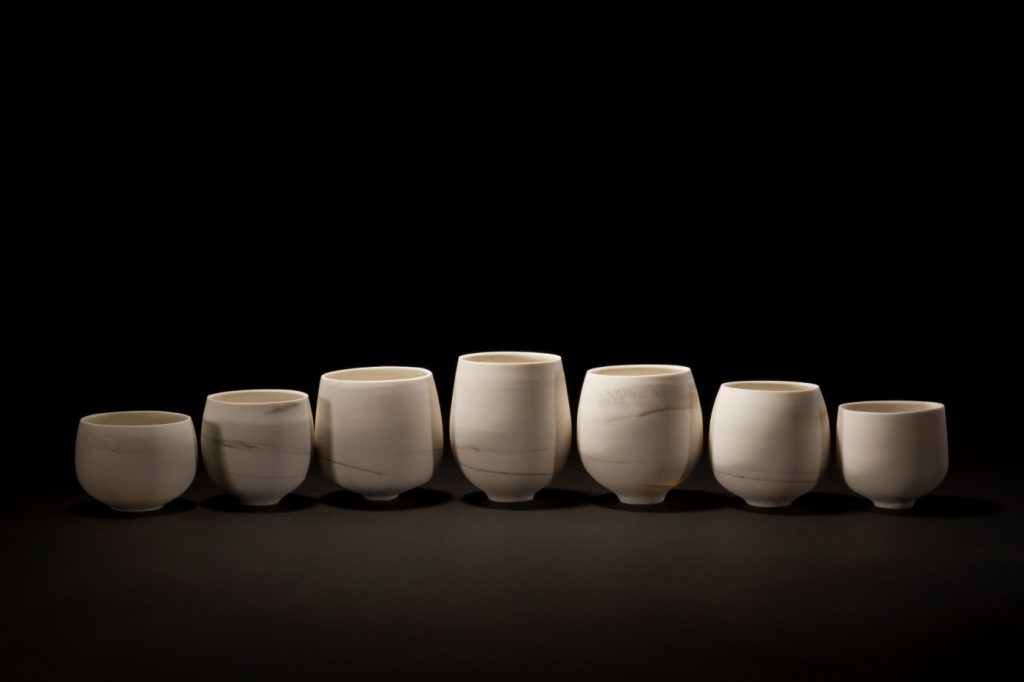
Stephanie Hammill, Drift line, 2014, Porcelain, each H 4-8 inches / 10-20 cm. Photo by Kevin Gordon. 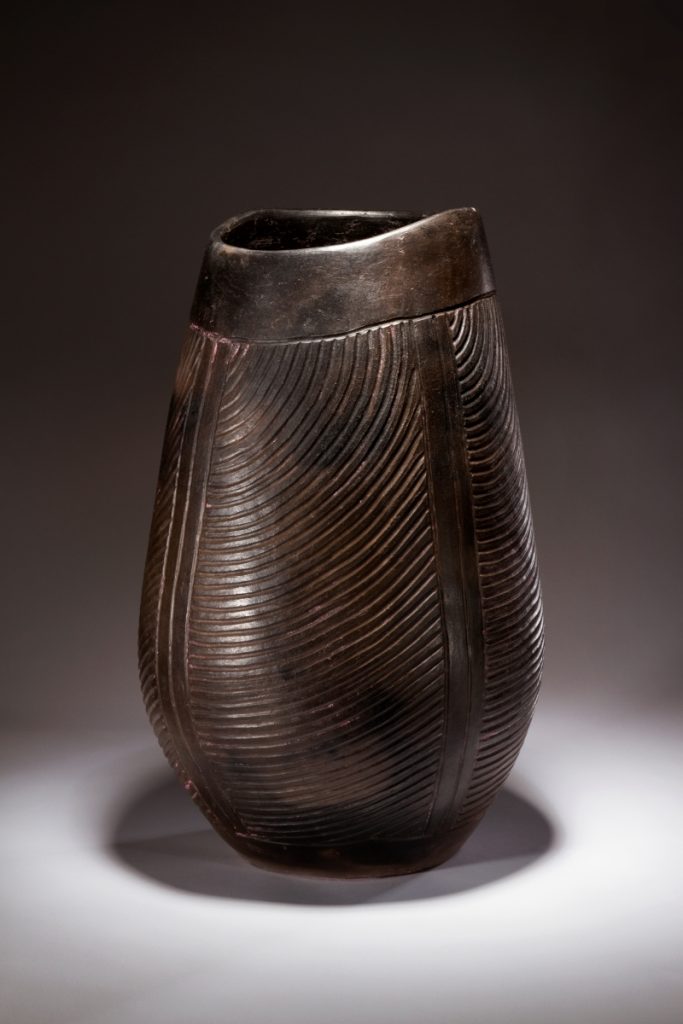
Bevan Thompson, Scarification (detail), 2014, Earthenware, stoneware, black fired, Dimensions variable. 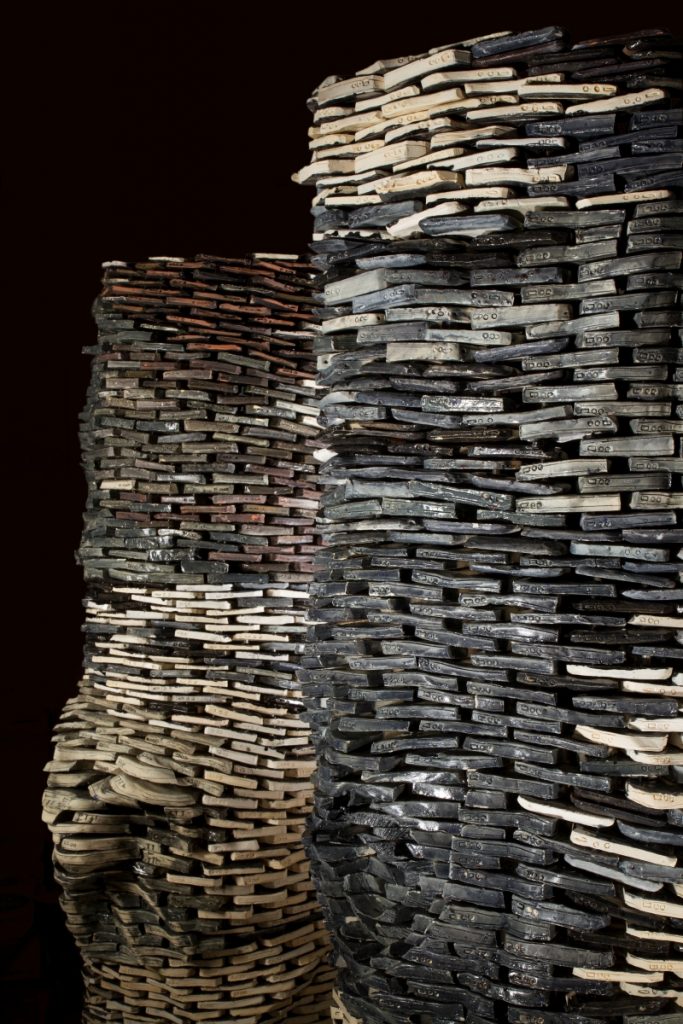
Graham Hay, Stone Phone Cairns (detail), 2014, Ceramic, galvanised steel, marine-grade stainless-steel, nylon washers, each 78 x 39.4 inches / 198 x 100 cm.
From landscape to technologies of communication, Graham Hay presented a work collapsing the ubiquity of the mobile phone with one of the most ancient forms of communication, the clay tablet. 8000 paper clay cast tablet iPhones were made ceramic and placed atop of one another to form two large pillar-like heads. This piece towered above the viewer, as a layered monolith reflecting on how humanity has shifted from back then to here now while the principles of communication and connection with others remain consistent.
A positive outcome of this exhibition was the connections it enabled across the university campus. It was integrated into the visual arts university curriculum. Students from the Faculty of Architecture, Landscape and Visual Arts flocked to the gallery to draw the myriad of forms and objects, resulting in transformation drawings that sought to merge distinct artworks into the single images. Such activity demonstrated the timely relevance of ceramics practice as a source of inspiration to students learning about art and artists working in other mediums.
Here and Now 14 was an inspiring exhibition that situated ceramic art as a veritable contender in the wider global art worlds. It also acted as a definitive moment in the history of exhibiting ceramics that firmly demonstrated the enormous potential of the medium and the artists included.
Participating artists: Luke Aleksandrow, Sandra Black, Greg Crowe, Ian Dowling, Pippin Drysdale, Stephanie Hammill, Graham Hay, Andrew Nicholls, Jacob Ogden-Smith, Warrick Palmateer, Bevan Thompson and Andrea Vinkovic.

Installation view of HERE&NOW14 at the Lawrence Wilson Art Gallery, The University of Western Australia, Crawley, 2014 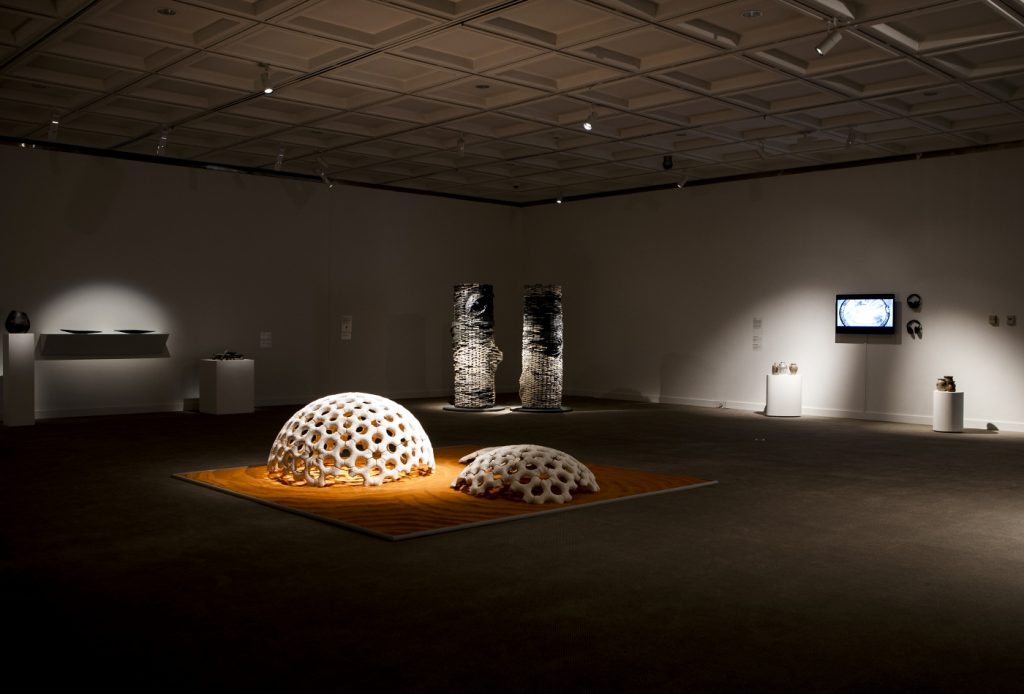
Installation view of HERE&NOW14 at the Lawrence Wilson Art Gallery, The University of Western Australia, Crawley, 2014 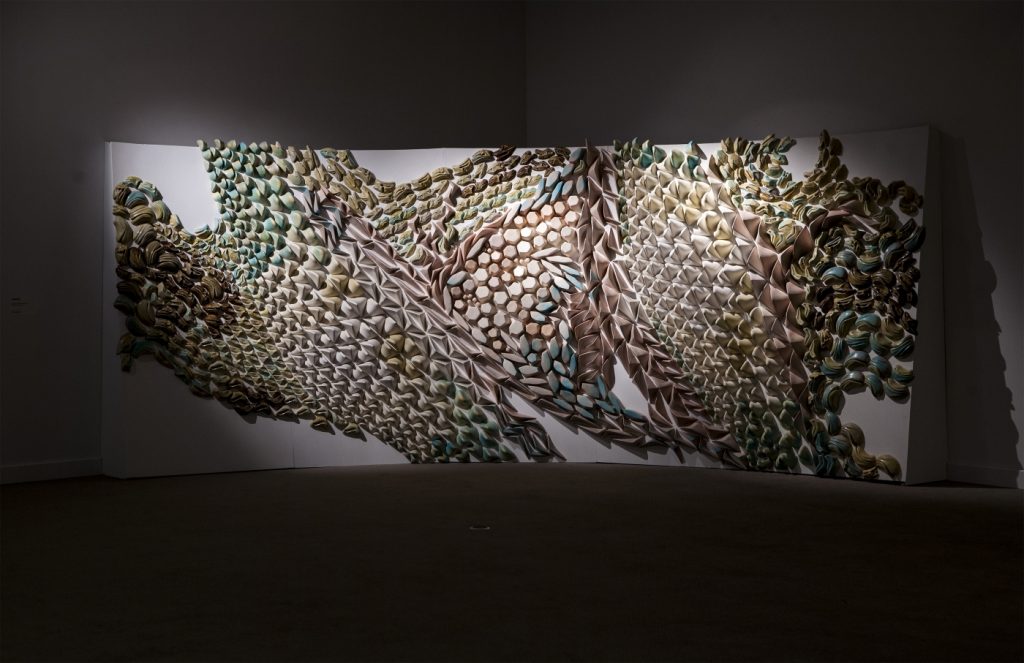
Installation view of HERE&NOW14 at the Lawrence Wilson Art Gallery, The University of Western Australia, Crawley, 2014
Laetitia Wilson completed a doctorate in 2011 in Art History at the University of Western Australia. For over half a decade, she has lectured at UWA and currently works as Adjunct Lecturer and Curator at the Lawrence Wilson Art Gallery, in addition to being art critic for the West Australian newspaper and freelance writer.
2015. Article published in Ceramics Now Magazine Issue 3.
The article is copyright of Laetitia Wilson and Ceramics Now, and cannot be reproduced without permission. All images are copyright of the artists unless otherwise stated.


